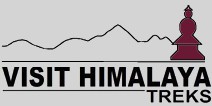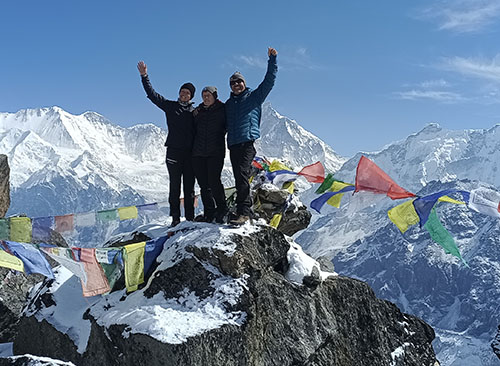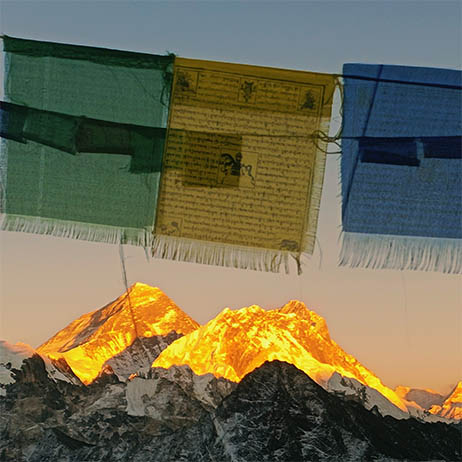When should you travel to Nepal? The answer to this question can be discovered with the help of another simple question: What is it about Nepal that interests you?
Some praise Nepal for its natural beauty, whereas others praise the country for its unique culture and a long list of festivals that do not spare a single day of the year. Meanwhile, some praise it for the adventure it offers.
So, when you should visit Nepal depends on what you want to do once you are here. Nepal offers such a diversity of activities fitting different seasons that there is not a single day in a year when Nepal is not fit to visit. From expeditions in Autumn and Spring to festivals throughout the year, Nepal has a lot to offer.
There is a myth that the Monsoon (July-August) is the most unfavorable time to visit Nepal because of incessant rainfall, but this is not true since the Monsoon does not mean rain all the time. The truth is that you can visit Nepal any time of the year depending on your interests. You may also have other preferences like the visibility of the sky which affects flight safety and temperature especially if you are doing the Everest helicopter Tour.
Some seasons may favor your preferences whereas others may not. Therefore, first and foremost, let’s learn about the different seasons in Nepal.
Travel Seasons in Nepal.
How many seasons are there? Four. That would be your answer if you are a Westerner. If you are from a place where there are not just four seasons, you will not be surprised that there are broadly five seasons in Nepal. They are spring, summer, monsoon, autumn, and winter. You need to know what these seasons mean for you in Nepal before you decide which season is favorable for you. Here we go:
Spring season (March to May).
This season runs from early March to late May. The end of cold winter marks the beginning of this season whereas the season ends paving the way for hot summer. The season is the time of vegetation. Blooming flowers, shining green trees, and thick bushes are the attractions of this season. You can expect a mild climate during this season. The sky is clear with visibility favorable for flights.
The season, being a transition from cold to hot is pleasant and fit for tourists since most of the activities expected by tourists are viable during this season. The season is popular for expeditions to Mount Everest and other mountains of the Himalayas. Not just expeditions, but also trekking, sightseeing, observing culture and festivals along with adventure activities like paragliding, bungee jumping, rafting, and canyoning, among others, are feasible during this time of year.

Blooming Rhododendrons flowers during the spring season In Nepal.
Summer/pre-monsoon (June and July).
This season runs from June to July. The season is marked by a hot and humid climate. Rainfall can be expected during this season since the clouds from the Bay of Bengal which causes Monsoon rain in Nepal start arriving in Nepal’s sky this season. The sky is visible for most of the time, except during the occasional rainfall. A lot of activities can be pursued during this season, including but not limited to trekking and sightseeing.
Trekking in the rainshadow zone is popular during this season. The Rainshadow zone means the zone which does not receive rainfall caused by the Monsoon clouds. For that reason, the Upper Mustang Trek and Upper Dolpo Trek, Humla Limi Valley Trek along with other short treks like the Langtang Valley Trek, Ghorepani Poon Hill Trek, and Kathmandu Valley Trek, among others, are possible during this season. Short hikes around Kathmandu and Pokhara are also common during this season.
Monsoon season in Nepal.
Monsoon is a unique season on the list. It runs from July to August. Summer and Monsoon are so blended with each other that a person cannot distinguish one from the other. Rainfall caused by the clouds from the Bay of Bengal is the characteristic feature of this season. Flooding and landslides are possible hazards during this season.
Visibility is poor during this time period of the year. However, it does not rain all the time during Summer as well as Monsoon, contrary to the common belief that these seasons are unfit because of the rain. Treks in the rainshadow region, short treks, and short hikes which are possible in Summer are also possible in Monsoon.
Autumn Season in Nepal.
Autumn is the season that follows monsoon. It starts in early September and ends in mid-December. The air is dry during this season. So the visibility is strong. It is the season of festivals. Three major Nepali festivals—Dashain, Tihar, and Chhath—are celebrated in this season. Most of the tourist activities are viable during this season, including expeditions, trekking, hiking, sightseeing, observing festivals, and adventure activities. Autumn is as favorable as Spring for a diverse set of tourist activities. If you are a tourist with multiple interests, these seasons are for you.

Trekking In Nepal during the Autumn season, Kanchenjunga to Makalu Upper GHT route.
Winter season in Nepal.
Early December brings winter in Nepal which continues until late March. Snowfall is common in the Himalayan and Mountain regions in this season. Visibility may not be always clear because of dense fog in various places of the country. However, fog is not a problem in many places like Kathmandu since the days are sunny and visibility is strong most of the time. However, short treks are possible during this season. Such short treks include the Langtang valley trek, Ghorepani Poon Hill trek, Mardi Himal Trek, Pikey Peak Trek, and Everest Panorama Trek are the best to do during the winter time in Nepal.
Activities and Seasons favoring them.
After explaining the seasons in Nepal, now I will familiarize you with the kinds of activities that you can pursue during different seasons. Please note that not all activities are fit for all seasons. So, it is ultimately your interest that decides your time for a trip to Nepal.
Peak Climbing and Mountain Expedition.
An expedition is possibly the most popular tourism product of Nepal (but not the only one). 8,848.86 meters tall Mount Everest—the tallest peak in the world—has long been associated with the identity of the country. Nepal has 8 out of 14 peaks in the world that range above 8,000 meters which are Mt Everest, Kanchenjunga, Lhotse, Makalu, Dhaulagiri, Manaslu, Cho Oyu, and Annapurna respectively from tallest to shortest.
Spring is the most favorable season for expeditions in Nepal. Favorable weather conditions due to lack of snowfall and lower temperatures contribute to the safety of expeditions in these seasons. Strong visibility during these seasons also favors the climbers in getting views of the mountains to make their expedition worthwhile.
Summer and Monsoon affect visibility whereas winter is the time for snowfall which can pose threats to the mountaineer. However, the month of May which falls in the category of the summer season is also ideal for the expedition; summer is just arriving at that time.
Trekking and Hiking in Nepal.
Trekking is for people who are passionate about enjoying nature with a detailed acquaintance. The beautiful vegetation, peaks, lakes, springs, and landscapes of Nepal are sure to be the recipe for enjoyment for a trekker in Nepal.
Autumn and Spring are the best seasons for trekking In Nepal. With the departure of monsoon, visibility is strong and through the clear space, one can enjoy the beauty of Nepal throughout their trek. Moreover, the moderate temperatures of Autumn are bound to provide a relaxing experience if you choose to trek in Autumn. Some famous treks are the Great Himalayan Trail and Treks in the Everest Region, Annapurna Region, Langtang Region, and Kanchenjunga Region, among others. Short treks are like the Poon Hill Trek and a trek around Kathmandu Valley can also be of your choice.
Sightseeing and Cultural Tours in Nepal.
The time for sightseeing is not much different from the time for trekking. Monsoon and Summer are two seasons that a sightseer should try to avoid since the visibility is poor and rainfall is frequent. However, it is not true that sightseeing is impossible in these two seasons; it is just that the other seasons are better.
Autumn and Spring are best for sightseeing since the air is clear and the views are clear in these seasons in comparison to others. Winter too is not a bad time, but in places, fog can disturb sightseeing in this season. Whether it be Jungle Safari in Chitwan National Park or just a casual visit to any place, you need to be conscious about daily weather before you set out for sightseeing. Any day can be a bad day.
Observing culture and festivals in Nepal.
Nepali culture is the evergreen identity of the Nepali people. People with 125 different ethnic groups live in Nepal and speak over 123 different languages in Nepal, according to the 2011 census conducted by the Nepal Bureau of Statistics. People with varying lifestyles can be found in Nepal due to the diversity in culture even within a small area. Nepali art and architecture have remained the keepsake of Nepali culture for hundreds of years. Pagoda-style temples, which are characterized by multiple layers of roofs, are commonplaces in Nepal and can be visited at any time of the year.
Also, Buddhist shrines like Swayambhunath and Baudhanath of Kathmandu Valley—which have also been listed in the World Heritage List by UNESCO—can also be visited in any season. Durbar Squares (Palace Squares) of Kathmandu, Bhaktapur, and Patan are also always open for visits.
It might sound crazy, but we indeed have festivals all over the year. Hinduism—the major religion in the country—is diverse with people following different gods and deities. Thus, the festivals, which are generally the worship of such deities, vary to a great extent throughout the country. Below are a few major festivals you can observe in Nepal along with their time of celebration and significance:
● Dashain Festival is the main festival of Hindus in Nepal in which people receive blessings from their seniors. It falls at the beginning of the autumn season—October or November generally depending on the Vedic Lunar Calendar. Dashain is a family festival that people celebrate in close family circles, so there is not much to see in the streets. However, you can expect to visit the temples of Durga, a Hindu goddess to whom the festival is dedicated, during this time.
● Tihar festival is another major Hindu festival that is celebrated in the fortnight of Dashain. In Tihar, crows, dogs, cows, and oxen are worshipped for their roles in human life. Newari people (the indigenous of Kathmandu valley) worship themselves as well during Tihar; such worship is called ‘Mha Pooja’, meaning self-worship. Tihar is also the festival of brightness. You can see the streets and houses decorated with lights, flowers, and colorful paperwork. You can definitely witness people singing Deusi-Bhailo in the streets--a typical Nepali folklore. Also, sisters wish for the long life of their brothers on the last day of the five-day-long festival.
● Chhath is a major festival of the Terai (Plains) in Nepal. You will not be able to observe this festival in the Hilly and Himalayan regions of Nepal. Sun god is worshipped in this festival. This festival is celebrated within a week of Tihar.
● Maha Shivaratri falls in February or March. Lord Shiva—a major deity in Hinduism—is worshipped in this festival. Hundreds of thousands of people from across the globe observe this festival at the Pashupatinath Temple of Kathmandu.
● Indrajatra falls in August or September. Indra—the king of gods—is worshipped by both Hindus and Buddhists of Kathmandu in this festival.
● You can observe Maghe Sankranti—the festival marking the end of winter—in mid-January.
● Fagu Purnima, also known as Holi, is getting popular in Western Culture as well. It is the festival of colors and happiness and is observed in late February or early March.
● Janai Purnima—the festival of changing sacred thread worn by Hindus across their body—is celebrated in August.
● Buddha Jayanti—the birthday of Lord Budhha—is observed in May or June.
There are numerous other festivals that you can observe in Nepal in order to get a real-time experience of the Nepali way of life. Anyway, you will observe one festival or another whenever you come to Nepal.
Adventure Activities in Nepal.
What sort of adventure are you interested in? Paragliding, micro-flights, rafting, canyoning, and bungee jumping, among others, are popular adventure activities in Nepal. Most of the adventure activities are fit for any time of year except a few which involve mountain flights and rivers (paragliding, micro-flights, and rafting) do not fit with monsoon and summer seasons since the visibility is poor and rivers are flooded due to heavy rainfall. Autumn and Spring are the seasons that favor all sorts of adventure activities.
Rafting is not safe in Winter as well since water levels can be way too shallow. The beginning of Spring is the best for rafting since it begins with light rainfall increasing the water level in rivers. So, when is the best time to visit Nepal? You might have figured out your answer. Please let us know if you need any sort of assistance from us. We are just an email away from you.







